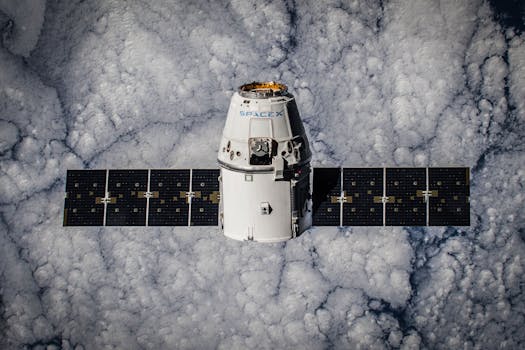
Satellite Telecommunications 2023: What’s New and What’s Next? – Satellite Telecommunications
Satellite Telecommunications 2023 is an exciting time for the industry, with numerous advancements and innovations transforming the way we communicate. As we delve into the world of satellite telecommunications, it’s essential to understand the current state of the industry and what the future holds. In this article, we’ll explore the latest developments, trends, and challenges in satellite telecommunications, providing insights into what’s new and what’s next.
Introduction to Satellite Telecommunications
Satellite telecommunications involve the use of satellites to transmit and receive data, voice, and video signals. This technology has been around for decades, but recent advancements have made it more accessible, affordable, and efficient. Satellite telecommunications play a critical role in connecting remote and underserved communities, providing backup connectivity during outages, and enabling global communications.
The satellite telecommunications industry has experienced significant growth in recent years, driven by increasing demand for connectivity, advancements in technology, and the expansion of satellite constellations. As the industry continues to evolve, we can expect to see new innovations, improvements in service quality, and expanded coverage.
Advancements in Satellite Telecommunications
Several advancements have transformed the satellite telecommunications landscape in 2023. One of the most significant developments is the launch of new satellite constellations, such as OneWeb and Amazon’s Kuiper Systems. These constellations aim to provide global coverage, high-speed connectivity, and low latency, enabling a wide range of applications, from broadband internet to IoT connectivity.
Another area of advancement is the use of High-Throughput Satellites (HTS), which offer increased capacity, faster speeds, and greater efficiency. HTS technology has enabled the delivery of high-quality, high-definition video and data services, making it an attractive option for applications such as video streaming, online gaming, and cloud computing.
Furthermore, the adoption of advanced technologies like artificial intelligence (AI), machine learning (ML), and the Internet of Things (IoT) is revolutionizing the satellite telecommunications industry. These technologies enable real-time monitoring, predictive maintenance, and optimized network performance, leading to improved service quality, reduced costs, and enhanced customer experience.
Challenges and Future Directions
Despite the advancements in satellite telecommunications, the industry still faces several challenges. One of the significant challenges is the issue of space debris, which poses a risk to operational satellites and the environment. The growth of satellite constellations has increased concerns about debris, and the industry must develop sustainable solutions to mitigate this risk.
Another challenge is the need for regulatory frameworks that support the development and deployment of satellite telecommunications services. Governments and regulatory bodies must create policies that encourage innovation, ensure fair competition, and protect consumer interests.
As we look to the future, satellite telecommunications will play an essential role in enabling global connectivity, bridging the digital divide, and supporting emerging technologies like 5G and 6G. The industry will continue to evolve, with a focus on sustainability, innovation, and customer-centricity. We can expect to see new developments in areas like satellite-based 5G networks, quantum communications, and in-orbit satellite servicing.
Conclusion
In conclusion, Satellite Telecommunications 2023 is an exciting and rapidly evolving industry, with numerous advancements, innovations, and challenges. As we move forward, it’s essential to address the challenges, leverage the opportunities, and create a sustainable, innovative, and customer-centric industry. By doing so, we can unlock the full potential of satellite telecommunications, enabling global connectivity, bridging the digital divide, and supporting emerging technologies.



